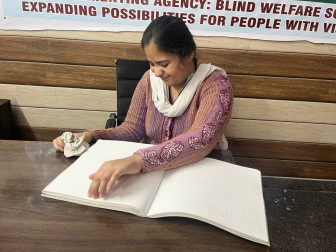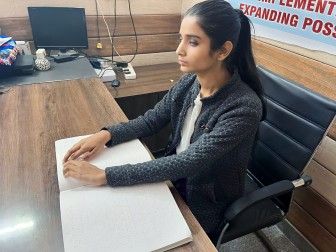Advocacy groups play a crucial role in bringing about social change, especially for marginalized communities. For the visually impaired, these groups can be a powerful force in promoting accessibility, equal opportunities, and awareness. If you are passionate about making a difference and want to start an advocacy group for the visually impaired, here is a comprehensive guide to help you get started.
Before diving into the logistics of forming a group, it's essential to understand why advocacy is necessary. Visually impaired individuals often face barriers in education, employment, transportation, and social inclusion. Advocacy groups can help address these issues by:
The first step in starting an advocacy group is to define your mission and goals clearly. Ask yourself:
Having a clear mission statement will guide your group's activities and attract like-minded individuals.
An advocacy group requires a dedicated team of individuals who share your vision. Start by reaching out to friends, family, and colleagues who are passionate about the cause. Consider including people with diverse skills, such as:
Effective advocacy is based on solid knowledge and understanding. Research the issues affecting the visually impaired community in your area. Gather data, statistics, and personal stories to support your cause. Stay informed about existing laws, policies, and organizations working in this field.
Create a strategic plan outlining your group's objectives, strategies, and activities. This plan should include:
Depending on your location, you may need to register your advocacy group as a nonprofit organization. This process can involve:
Networking is crucial for advocacy work. Connect with other advocacy groups, nonprofits, government agencies, and stakeholders who can support your cause. Attend relevant events, join coalitions, and collaborate with organizations that share your mission.
Awareness campaigns are a core component of advocacy. Use various platforms to spread your message:
Advocacy often involves influencing policymakers to enact change. Develop relationships with local, state, and national representatives. Schedule meetings to present your group's concerns and proposed solutions. Be prepared with well-researched data and compelling personal stories.
Fundraising is essential to sustain your advocacy efforts. Explore different fundraising methods, such as:
Regularly evaluate your group's progress towards its goals. Collect feedback from members and stakeholders to identify areas for improvement. Be willing to adapt your strategies based on what is working and what is not.
Starting an advocacy group for the visually impaired is a powerful way to effect positive change. By following these steps, you can create a dedicated team, raise awareness, influence policy, and provide a supportive community for visually impaired individuals. Remember, advocacy is a continuous journey, and every effort, no matter how small, contributes to a more inclusive and equitable society. Empowering voices can make a world of difference.
By contributing to our feature donation campaigns, you are not just supporting us,
you are fostering independence, education, and accessibility for the people with blindness.
We are providing free shelter, food and educational support to the abandoned visually impaired girls residing at BWS.
₹1105795
raised of ₹2000000 Goal
55%
4 Days left
554 Supporters
Maa and Papa weren’t the happiest when I was born. They thought I was a burden to them.
₹666390
raised of ₹2000000 Goal
33%
4 Days left
499 Supporters
The Walking Canes have proved a useful tool to millions of blind people in navigating their environments with confidence and ease.
At our organization, we provide a nurturing environment for visually impaired girls, helping them lead fulfilling lives despite their challenges.
The following stories highlight the transformative journey of these remarkable individuals within our organization.

Hailing from Delhi, Sneha came to Blind Welfare Society in July 2023.
.jpeg)
Hailing from a small village of Gwalior district, Madhya Pradesh, Archana came to Blind Welfare Society in July 2023

Chhavi’s journey is a testament to the transformative power of education and the invaluable support provided by the Blind Welfare Society.